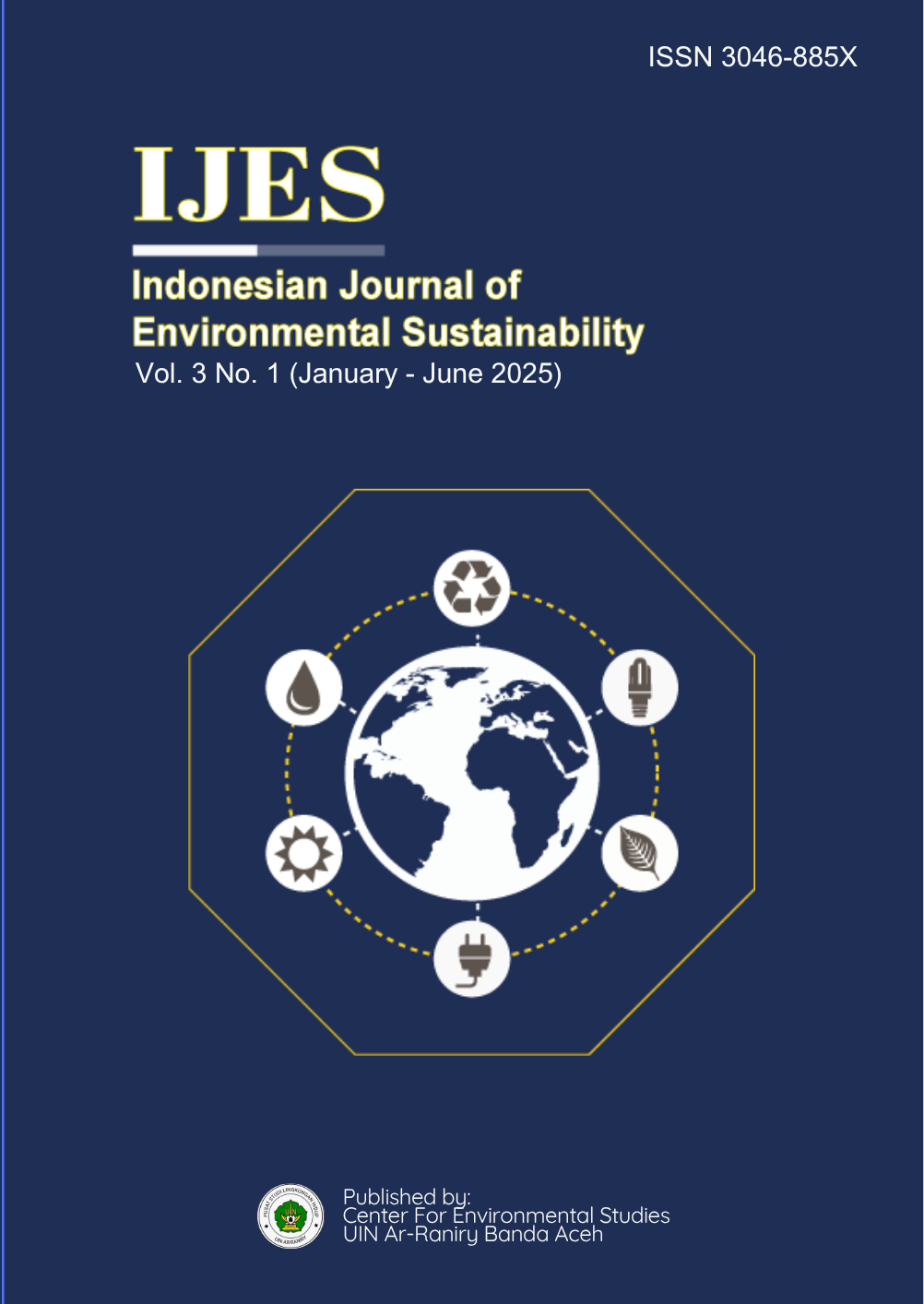A REVIEW: SEAWEEDS POTENTIAL AS METAL ABSORPTION AGENTS IN AQUATIC ENVIRONMENTS
DOI:
https://doi.org/10.22373/ijes.v3i1.7783Keywords:
Heavy Metals, Seaweed, Environment, WatersAbstract
Heavy metal pollution in aquatic environments is an issue that threatens aquatic ecosystems. One natural solution to overcome this problem is to utilize seaweed as a heavy metal absorbing agent. Seaweed is capable of absorbing heavy metals such as cadmium (Cd), lead (Pb), arsenic (As), copper (Cu), and zinc (Zn) through interactions on their cell walls. Types of seaweed that have been studied by many researchers such as Gracilaria sp., Caulerpa racemosa, Ulva sp., Pandina australis, Kappaphycus alvarezii, Codium fragile and Eucheuma spinosum have demonstrated varying but significant effectiveness in absorbing heavy metals. It can be concluded that seaweed has great potential to be used as an environmentally friendly absorbing agent and can serve as a bioindicator of aquatic environment quality.
















